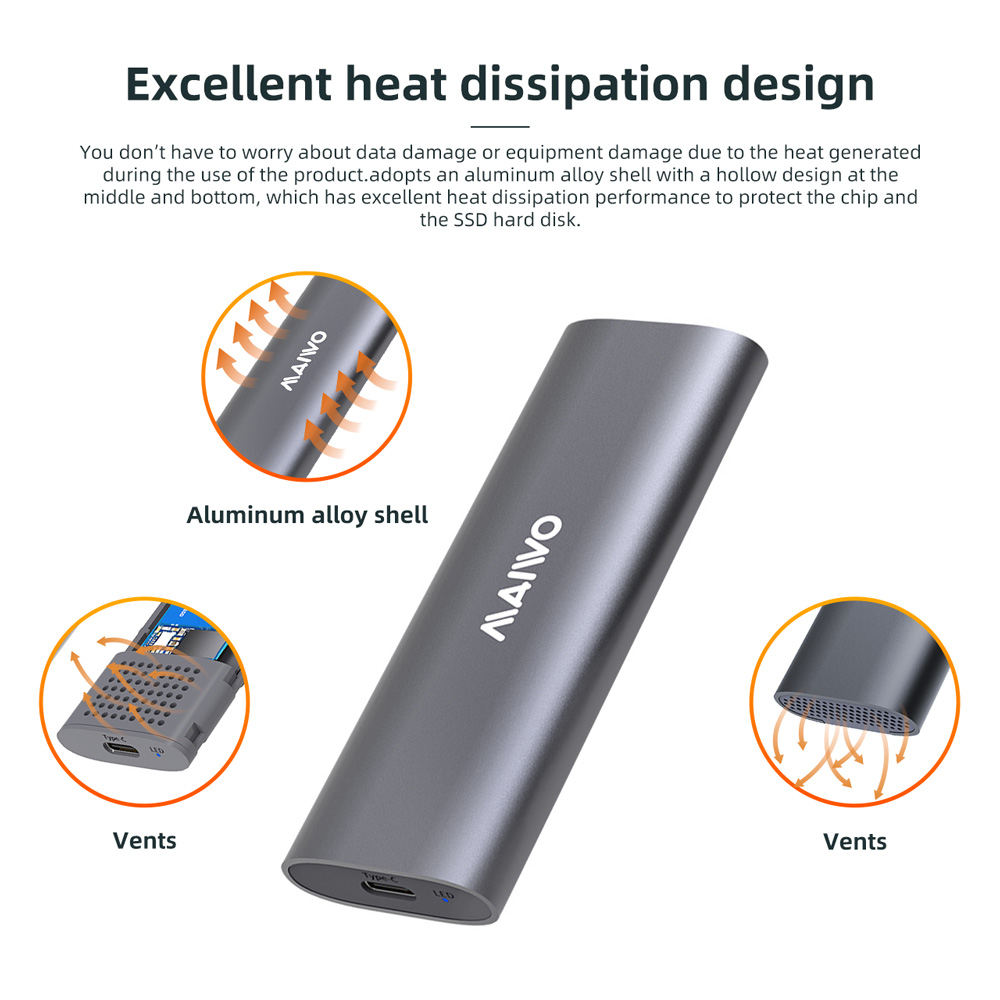In the ever-evolving landscape of data storage, M.2 SATA enclosures have become a key player, providing users with a versatile and compact solution for expanding storage capabilities. These enclosures are designed to house M.2 SATA solid-state drives (SSDs), offering a blend of performance, compactness, and ease of use. To truly understand the speed of M.2 SATA enclosures, it's crucial to explore the underlying technologies and the factors influencing their performance.

1. M.2 SATA Overview:
M.2, originally known as the Next Generation Form Factor (NGFF), is a compact and versatile form factor primarily used for connecting internal storage devices to a motherboard. M.2 SATA, specifically, utilizes the SATA (Serial ATA) interface, which is a widely adopted standard for connecting storage devices. This interface, although not as fast as the NVMe (Non-Volatile Memory Express) protocol, still provides substantial speed improvements over traditional hard disk drives (HDDs).
2. SATA III Interface:
The speed of M.2 SATA enclosures is fundamentally tied to the SATA III interface, which is the third generation of the SATA standard. SATA III has a maximum theoretical data transfer rate of 6 gigabits per second (Gbps). It's important to note that this theoretical maximum represents the peak speed under ideal conditions, and real-world performance may vary due to factors such as cable quality, system architecture, and the specific SSD used.

3. Real-World Speeds of M.2 SATA Enclosures:
While the SATA III interface offers a theoretical maximum speed of 6 Gbps, the actual speeds achievable with M.2 SATA enclosures are influenced by several factors. In practical scenarios, users often experience data transfer rates slightly lower than the theoretical maximum due to protocol overhead and other system limitations. Nonetheless, M.2 SATA enclosures can still deliver significantly faster read and write speeds compared to traditional HDDs, making them a popular choice for those seeking improved storage performance without fully transitioning to NVMe technology.
4. Benefits of M.2 SATA Enclosures:
M.2 SATA enclosures provide users with a range of benefits beyond just speed. Their compact form factor makes them an excellent choice for portable storage solutions, allowing users to carry substantial amounts of data in a pocket-sized device. Moreover, M.2 SATA SSDs are known for their energy efficiency and durability, making them suitable for both desktop and mobile applications.
5. Use Cases for M.2 SATA Enclosures:
The speed of M.2 SATA enclosures positions them as a viable solution for a variety of use cases. They are commonly used for external storage solutions, allowing users to transform M.2 SATA SSDs into portable drives. This proves beneficial for individuals who require fast and reliable storage for tasks such as content creation, multimedia editing, and data backups.
6. Considerations for Users:
When considering an M.2 SATA enclosure, users should be mindful of their specific requirements. While M.2 SATA SSDs offer improved speed over HDDs, those with intensive data transfer needs may opt for NVMe solutions that leverage the PCIe interface for even higher speeds. Additionally, users should ensure that their M.2 SATA enclosure is compatible with their SSD form factor and that they are using a high-quality SATA III cable for optimal performance.
7. Looking Ahead:
As technology continues to advance, the storage landscape evolves. While M.2 SATA enclosures offer a commendable balance of speed and versatility, users should stay informed about emerging technologies and consider future-proofing their storage solutions. NVMe enclosures, with their higher speeds and performance capabilities, may become more prevalent, especially as the demand for faster data access continues to grow.
In conclusion, the speed of M.2 SATA enclosures is intricately tied to the SATA III interface, providing users with a substantial performance boost over traditional HDDs. These enclosures are a compelling option for individuals seeking a balance between speed, portability, and energy efficiency. As technology progresses, users are encouraged to assess their specific needs and stay informed about emerging storage solutions to make informed choices that align with their evolving requirements.